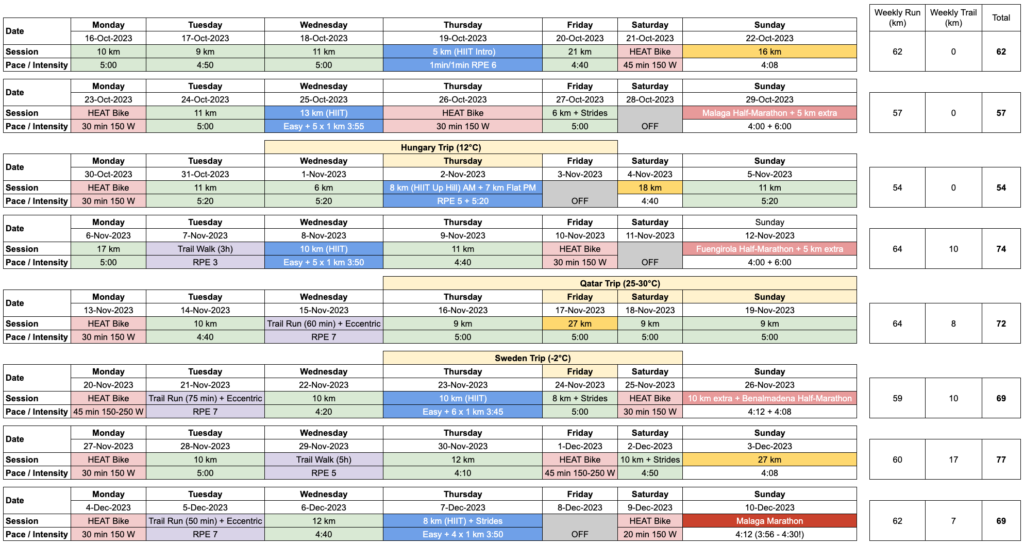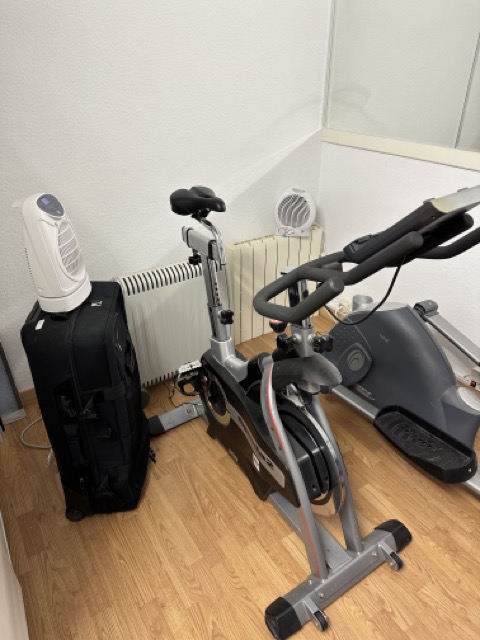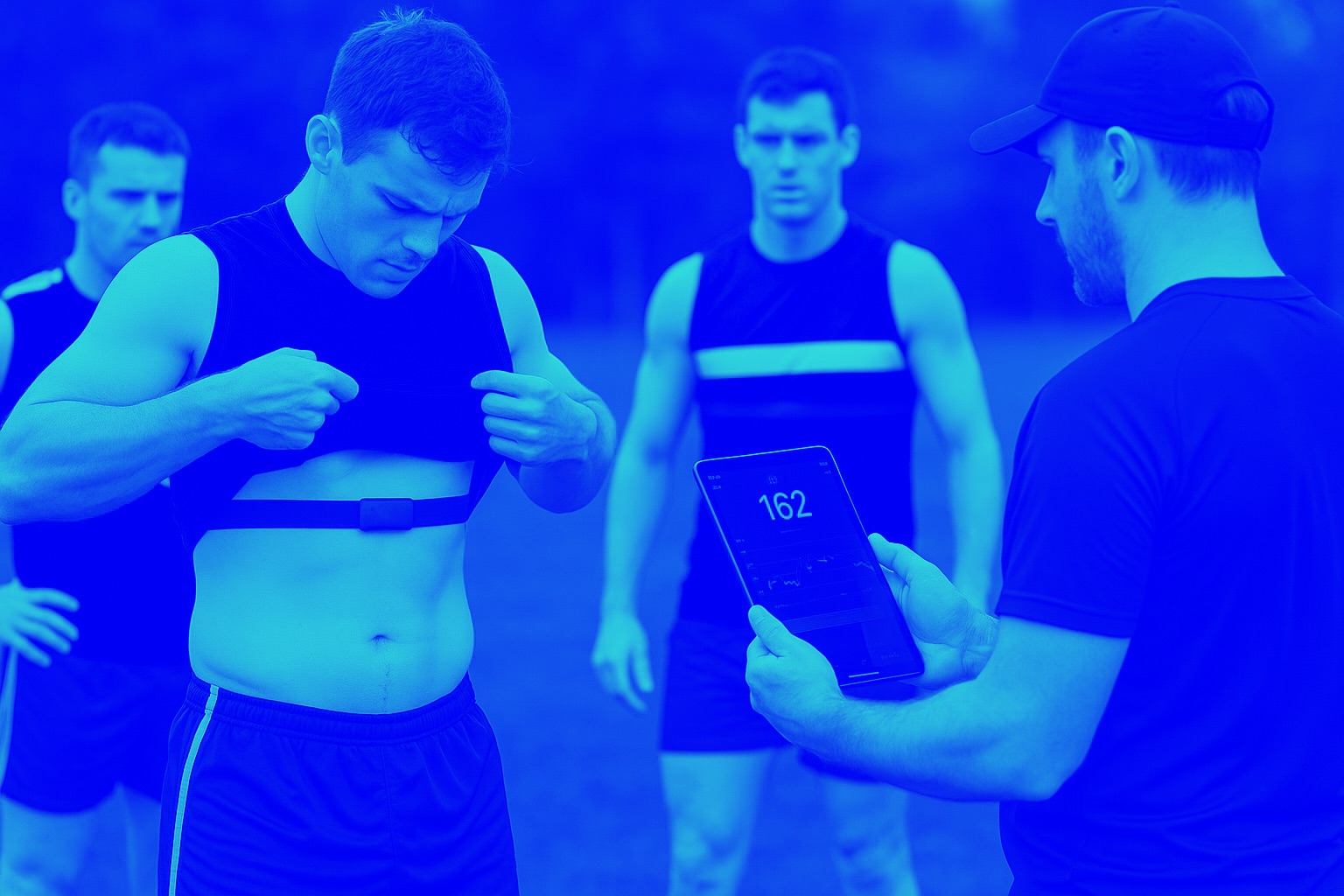Revolutionizing Marathon Training? My Journey to Malaga Marathon Personal Best
On December 10th, 2023, I achieved a landmark in my running career at the Malaga Marathon. Clocking in at 2:56:45, I not only shattered my personal record by nearly two minutes but also showcased the effectiveness of an innovative training approach. This methodology, while deeply rooted in my 20 years of experience as a head of performance in elite football, was a first-time endeavor for me in the context of marathon training.
Importantly, I opted to run in ‘basic’ Nike shoes for this event. This decision was a deliberate move to avoid the latest technology-enhanced footwear, which is known to improve running times by a few %. By doing so, I aimed to ensure a fair comparison with my past performances, emphasizing the impact of my training strategy over the potential advantages offered by advanced shoe technology.
The Genesis of a New Training Approach – A Passion for Training and Tactical Periodization
My journey towards this innovative approach has been fueled by a deep passion for training programming and a keen interest in the so-called tactical periodization. Recent research in this area sparked the idea of integrating these principles into my marathon training. Reflecting on my intense running regime during my six years with PSG, where I never managed a marathon under 2:58 despite serious training (consistently running >20 km on match day to either reach the Parc des Prince from my appartement for home matches – or to visit the surroundings when playing away), I can now recognize the potential for improvement with this new approach.
Integrating Tactical Periodization with Marathon Training
This realization led to a reimagining of marathon preparation, blending the disciplined structure of football tactical periodization training with the endurance demands of long-distance running.
It’s important to recall the fundamental principles of tactical periodization, especially as they apply to marathon training. At its core, tactical periodization is founded on the principle of horizontal alternation of training contents within each microcycle (i.e., the training week between 2 matches). This approach strategically develops one physical capacity while allowing another to recover, creating a well-rounded and effective training regime. These sessions are typically oriented toward:
- Strength (D-5/D-4)
- Endurance (D-3)
- Active recovery and Speed (D-2)
Weekly Structure: A Blend of Competition and Training
I tried to plan each week combining rigorous training sessions with weekend ‘competitions’ – as would be structured the schedule of a football team. These included official half marathons in Malaga (29/10 that I ended up missing since I didn’t get my bib on time, so I ran on my own, 1:24), Fuengirola (12/11, 1:25), and Benalmadena (1:25 with a 10-km run leading to the race to increase volume, 26/11), as well as solo >26-km runs in Marbella’s “paseo” (5/11 and 3/12) and in Doha on the side of the Aspetar Conference (17/11) (Table 1).

Table 1: Detailed 8-Week Marathon Preparation Program. This comprehensive table outlines all training sessions, their content, and intensities, measured either by RPE (Rate of Perceived Exertion) or specific running paces (time per km). It provides an insightful overview of my structured and varied training approach leading up to the Malaga marathon (2:56:45).
Strength and Endurance: Core Elements of Football Periodization
- Mountain Trail Workouts and Downhill Running: Combining Strength and Endurance
The mountain trail walks and runs I undertook towards ‘La Concha’ from my home in Marbella on D-5 or D-4 were integral to my training, focusing on more than just endurance (Table 1). With a Rate of Perceived Exertion (RPE) often around 3-4 for walks and 6-7 out of 10 fur runs, and durations from 60 to 75 minutes (runs) to 3-5 hours (walks), these workouts were not designed to replicate the high-intensity neuromuscular demands typical of a football match’s D-4 sessions. However, they played a crucial role in building ‘specific’ strength, which is known to be a key factor in improving running economy. Running economy is a significant determinant of marathon performance. Additionally, these runs (and especially the eccentric work during he downhill part) likely helped in conditioning my legs for the gradual muscle damage that occurs throughout a marathon, as the kilometers and fatigue accumulate.
Video: Me running downhill on mountain trails, emphasizing eccentric work for the quads. This strengthens and builds resilience in the legs, leading to better running economy and increased fatigue tolerance during races
- Isolated Eccentric Training: The Icing on the Cake
As the muscle soreness from the initial mountain workouts began to subside around the third to fourth week, I progressed to incorporate additional eccentric exercises targeting key muscle groups such as glutes, hamstrings, adductors, and quads (1 set per muscle group, 6-10 reps using light weights, it’s enough!!). Implemented immediately after the mountain trail runs, these exercises were in line with typical football training methods and served as a valuable augmentation to the neuromuscular challenges posed by the runs. Eccentric training is essential for developing muscle strength and resilience, crucial for reducing injury risk and improving overall running efficiency.
- HIIT Sessions: Building the Engine
The HIIT sessions performed on D-4 (non-adapted, sore legs for a few days afterward during the first weeks) or D-3 (adapted, ‘digested’ in 24/36 hrs by the end of the preparation) were the cornerstone of my high-intensity endurance training (Table 1). They involved 1-km long intervals at 90-95% of my maximal aerobic speed (3:40-3:55 per km), with each week increasing the intensity and reducing the recovery time from 2 to 1 min (Table 1).
Innovative Heat Training
Twice weekly, primarily on D+1 and D-1, I dedicated myself to a 45-minute heat training session in a custom-built heat chamber in my basement, maintaining temperatures above 35°C (Table 1). This setup included heaters and a static bike, with the sessions generally falling into an RPE range of 3 to 5 (free intensity, 150-250 Watts). This specific training was designed with 3 key objectives in mind: maintain a high overall training load while simultaneously stimulating important metabolic changes (i.e., increase plasma volume and enhance cardiac efficiency), yet without placing excessive neuromuscular strain on the body. Strategically timed after intense workout days or competitions and before the upcoming weekend runs, this method proved highly effective for optimal recovery and physiological adaptations.

Photo of My Heat Training Setup: Featuring four powerful heaters, this custom-built training space in my basement efficiently reaches temperatures of over 35°C, creating the perfect environment for my heat acclimation sessions.
Active Recovery and Speed Work
I maintained a careful balance between the hard-running sessions and recovery runs. Regular 12-15 km runs at an easy pace (4:20-4:40 per km) were placed early in the week, in between mountain trail runs and HIIT, or at D-2 (Table 1). Some of these runs (later in the week) were also coupled with a few ‘high-speed stride runs’ (4-6 x progressive 60-m runs up to 80% maximal sprinting speed), progressively building up speed for muscle activation and stride readiness.
Adapting to Climate and Location, Maximizing Environmental Conditions, and Capitalizing on varying climates and travel schedules.
During my trip to Budapest (1-3/11/23), where I was a keynote speaker for the Hungarian Football Federation, I was still recovering from an easier week post my first half-marathon (Table 1), leaving me with heavy legs (having not run at such a pace for many years, I felt quite sore for 3-4 days). With a tight schedule, including a 5 am flight the day after the conference, my only opportunity for intense training was in Budapest itself on 2/11/23.
To optimize this limited timeframe, I scheduled a double session on the same day. In the early morning, I completed an uphill HIIT session before the conference, combining training with a bit of sightseeing. Later in the evening, post-conference, I went for a 7km easy run, which served as a cool-down and a chance to explore the city further. This compact yet effective training strategy allowed me to stay on track with my regimen while fulfilling my speaking commitment.
During my trip to Doha (Qatar) in November for the ACL Rehabilitation Aspetar Conference (16-20/11), I made a strategic decision to arrive a day ahead of schedule. This allowed me to embark on a 27-km run at 5 am, immediately after my flight landed (17/11). This run was not just a response to jetlag; it played a crucial role in my continued heat acclimatization strategy and aligned seamlessly with my training plan of doing long-distance runs on weekends. This strategic planning ensured that my travel did not disrupt my training routine but instead, augmented it effectively.
Before the trip to Boson (Sweden, 23-25/11), I scheduled a high-intensity interval training (HIIT) session on D-3 in Marbella, anticipating a shorter and colder run on D-2 with my friend Johan Lundberg, followed by a day off with an early travel (4 am wake up and 6 am flight). This strategic planning ensured optimal training impact despite logistical constraints just before the Benalmadena half marathon race (26/11, 1:25 after a 10 km ‘warm-up t Marathon pace, 4:08).
The Culmination: A New Benchmark in Marathon Experience
This training methodology, inspired by football tactical periodization, has the potential to be a game-changer (for me at least!). It proved effective not just in physical preparation, but also in mental fortitude. What also made this approach particularly enjoyable and motivating was the holistic integration of various elements.
Training myself also brought a unique sense of fulfillment. It led me to question the dynamics of training others, considering the multitude of personal responses one can have to factors like eccentric strength sessions, long flights, and climate change. Being my own ‘subject’ was incredibly exciting. It allowed for real-time adjustments in training content and programming. While the foundation of my regimen was tactical periodization, I incorporated slight weekly variations to account for travel, live events, and my response to each session (Table 1). This adaptability and hands-on approach added an enriching layer to the entire training experience.
A New Model for Athletes and Coaches?
The detailed 8-week program, outlined in Table 1, serves as a blueprint for curious athletes and coaches aiming to innovate with new training philosophies.
Table 1 reveals a key aspect of my marathon preparation: the maximum weekly distance never exceeded 74 km, which is relatively low for marathon training. This was offset by the quality and variety of my workouts, including heat training sessions on a static bike, short but intense HIIT sessions, and significant neuromuscular work like trail downhill running and eccentric gym exercises.
The training plan was carefully designed to maintain a stable chronic workload of around 70 km per week. This consistency ensured that the marathon itself wouldn’t cause a drastic spike in distance, even though it represented an increase in intensity. Interestingly, there was no traditional tapering in terms of volume reduction because the overall training volume was never excessively high to begin with, making a standard taper less necessary.
This approach reflects the principles of tactical periodization, where the focus is on maintaining consistent, stable training without extreme peaks and valleys. It’s a method that emphasizes a steady chronic load, aligning with the philosophy that consistent and balanced training leads to optimal performance.
In conclusion, my success at the Malaga Marathon is not only a personal milestone but also a pioneering step in the validation of a novel training approach. This innovative method, which incorporates heat training and places a significant focus on neuromuscular training, exemplifies how football periodization principles can be effectively adapted to enhance marathon performance. It underscores the potential of this holistic approach in improving endurance, strength, and overall running efficiency, offering a groundbreaking path for runners looking to explore new and diverse aspects of training. The integration of targeted neuromuscular work, alongside traditional endurance and strategic heat acclimation, represents a substantial advancement in the field of long-distance running preparation.
If you’re curious to delve deeper into all that I’ve implemented in my training regimen – beyond what’s shared here and including various monitoring tools not discussed in this piece – please feel free to get in touch. I welcome the opportunity to share more insights and details about this groundbreaking approach to marathon preparation.
Additionally, for those interested in diving deeper into High-Intensity Interval Training and Heat Training, at HIIT Science we offer a comprehensive course covering all the intricacies of these methods. It’s a valuable resource for anyone looking to expand their knowledge and skills in these areas.




Mario Malaby
I live in Phoenix Arizona in the United States. The Average high in July is near 44 C. Even for morning runs it’s 38 C how can this affect my physical health because this is all I have